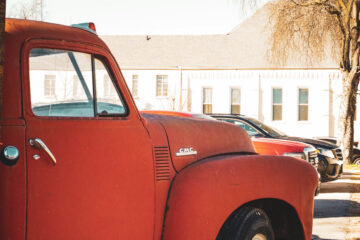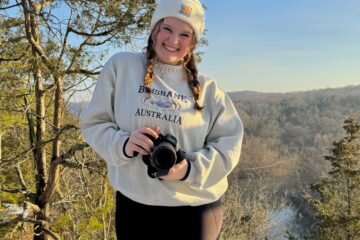Landscape photography has always been something I have admired from afar, but it’s never been my strong suit. I’ve mostly focused on people, events, and street photography, so stepping into the world of nature shots feels a bit daunting. But lately, I’ve felt that it’s time to dive into this new challenge and really get a solid understanding of how to shoot landscapes the right way.
For me, learning landscape photography is about more than just having the right equipment. It’s about understanding how to use my camera settings in a way that brings out the best in nature’s beauty. One of the biggest things I’ve struggled with is getting everything in focus from the foreground to the background. In portrait photography, I’m used to focusing on one subject, but in landscapes, I need to ensure that the entire scene is sharp. To do this, I’ve learned that I need to maximize the depth of field. This means using a smaller aperture (higher f-stop number) and focusing on a point about one-third of the way into the scene. A wide-angle lens can also help with this, as it allows more of the image to appear sharp from front to back. By using these techniques, I can get the whole landscape in focus and avoid the blurry background that’s common in portrait shots.
Another challenge has been the ISO setting. Since I usually shoot in daylight, I try to keep my ISO as low as possible—around 100—to avoid any grainy shots. But in low-light situations, like when I’m shooting at sunrise or sunset, I have to increase the ISO a bit to make sure the image isn’t too dark. The trick is keeping it low enough to avoid noise but high enough to get a good shot without underexposing the image.
One thing I didn’t expect was how much weather plays a role in landscape photography. At first, I thought bad weather would ruin my photos, but I’ve found that the opposite is true. Overcast skies can actually work in my favor because the clouds soften the light and prevent harsh shadows. A rainy day can add drama and mood to a shot, and I’ve even learned to appreciate the misty atmosphere that follows a storm. Weather isn’t always predictable, but I’ve realized that embracing it, rather than avoiding it, opens up a lot of creative possibilities.
As I’ve been practicing, I’ve also had to focus a lot on composition. This is where things get tricky. In landscapes, it’s easy to feel like there’s too much going on, especially when there are wide open spaces. I’ve been using techniques like the rule of thirds and leading lines to help guide the viewer’s eye through the scene. I also try to use elements in the foreground, like rocks, trees, or flowers, to add depth and make the image feel more three-dimensional. But even though these rules help, I’ve found that sometimes breaking them can result in more interesting shots. Nature doesn’t always follow the rules, and I’ve started to experiment with framing and composition in ways that feel more natural and less rigid.
Another area I want to improve in my landscape photography is taking simple, wide-open scenes and making them more visually interesting. It’s easy to capture a plain field or a row of trees, but I don’t want my photos to be something people could just look at out of a window and see as plain or ordinary. I want to learn how to take those wide landscapes and make them visually appealing in a way that the eye would not be able to notice on its own. Whether it’s through finding the perfect lighting, playing with perspective, or discovering the right framing, I want to turn these seemingly simple scenes into something that draws attention and highlights the beauty that’s not always immediately obvious.
I’ve also been focusing on learning from other photographers. Reading articles and watching tutorials from experienced landscape photographers has given me a better understanding of what works in the field and how to troubleshoot challenges. The more I learn, the more I realize that there’s no one right way to shoot a landscape—it’s all about experimenting and finding what works for me. But I also understand now that certain technical aspects, like exposure settings and the time of day I shoot, can make a big difference in the quality of the shot (Sardinas, 2022).
Looking ahead, I’m excited to keep pushing myself in this area. I want to experiment with different times of day and explore how the quality of light changes throughout the day and across seasons. I’m also curious to explore techniques that can enhance my shots, such as long exposure or capturing motion in the landscape, to create images that feel more dynamic and engaging.
Ultimately, this journey into landscape photography has been challenging but also incredibly rewarding. It’s pushing me outside my comfort zone and forcing me to think about photography in new ways. I know I still have a lot to learn, but every time I get a shot that feels right, it reminds me that the effort is worth it. So, while landscape photography might be my next big hurdle, I’m excited to continue learning and improving along the way.
Have a story, a moment, or an idea you think deserves to be captured? I’d love to hear about it! You can submit your experiences through the “Share a Story” form on my website or check out the “Suggest a Shot” page to let me know what you’d like to see next.
Lastly, I would love to stay connected, so be sure to Follow Me on Instagram, Facebook, and Pinterest (linked at the top of my site). I’ll be sharing new content, behind-the-scenes moments, and more glimpses into my creative process.
To read more content like this, click this link: Grace Yeaple Media Blogs!
Reference
Sardinas, J. (2022). Landscape photographers’ worst enemy and best friend. Fstoppers. Retrieved from https://fstoppers.com/landscapes/landscape-photographers-worst-enemy-and-best-friend-696781


